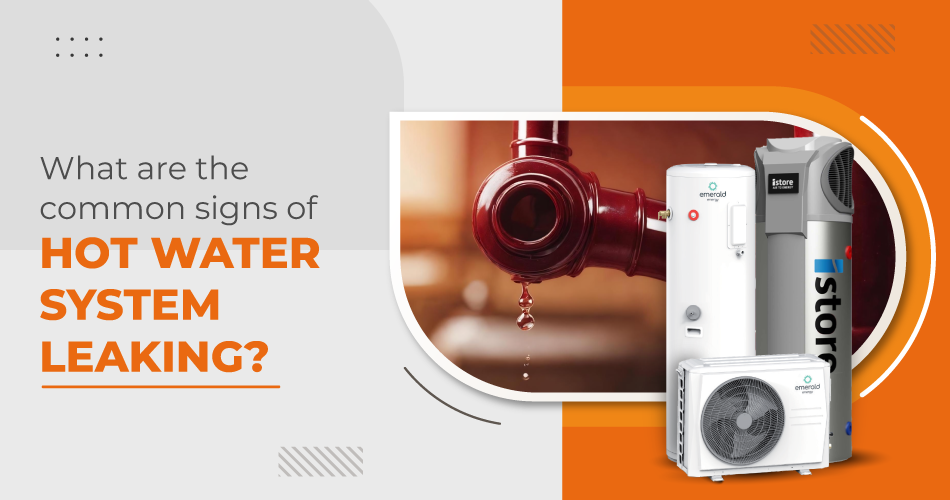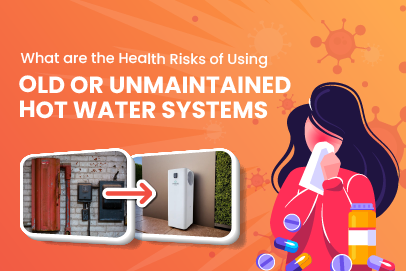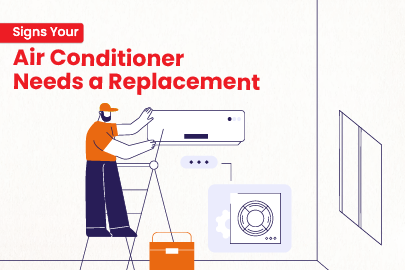When a hot water system begins to leak, it can cause significant disruption, whether in a commercial setting or within the comfort of a residential home.
This blog post explores the critical indicators of a hot water system dripping, emphasizing both commercial and residential environments.
1. Sudden Increase in Utility Bills
A sudden and unexplained surge in water bills often serves as the initial warning sign of a hot water system seeping.
Whether in sprawling commercial complexes or cosy residential dwellings, an unexpected increase in water consumption, not attributable to known factors such as additional occupants or altered usage patterns, may point towards a concealed leak within the system.
This scenario necessitates a thorough inspection to identify and rectify the leakage, thereby preventing it from escalating into a more severe and costly problem.
2. Visible Moisture or Puddles Near the Unit
The presence of unexplained moisture, dampness, or puddles around the hot water system is a tell-tale sign of a leak. This phenomenon is not just a minor inconvenience; it signifies that water is escaping from the system, potentially leading to structural damage over time.
Immediate action is required to address this issue to safeguard the premises from water damage and to maintain the operational integrity of the hot water service.
3. Decrease in Water Pressure
A noticeable reduction in water pressure across faucets and appliances can signal a hot water service leaking. Identifying the source of the leak is essential to restore the system's functionality and ensure a consistent hot water supply.
4. Audible Dripping or Running Water
The sound of water leaking from heat pump when all taps are turned off can be an alarming indicator of a hidden leak within the hot water system.
5. Signs of Corrosion or Rust
Corrosion or visible rust on the hot water system often points to ongoing water leakage. The persistent exposure to moisture can lead to the deterioration of metal components, which is particularly concerning in environments where the system is not subjected to regular maintenance checks.
6. Indications of a Heat Pump Leak
Specifically for heat pump systems, signs such as water pooling around the unit or dampness along the connecting pipes can indicate a heat pump leaking.
Such leaks not only reduce the system's efficiency but can also inflate operational costs, a significant concern in commercial settings where hot water demand is substantial.
7. Moisture around Heat Pump Components
Moisture or water leaking from specific components of the heat pump, like valves or connections, suggests a malfunction that requires immediate attention.
Regular monitoring and maintenance of these components can prevent minor leaks from turning into major issues, ensuring the system remains efficient and reliable for both commercial and residential use.
8. Fluctuating Hot Water Temperatures
Experiencing inconsistent hot water temperatures can be indicative of a hot water system seeping.
This inconsistency often results from water escaping the system, which affects the heater's ability to maintain stable temperatures.
9. Discoloured Water from Taps
When a hot water system is leaking, particularly from internal components like the tank or pipes, it may cause rust and corrosion that lead to discoloured water.
Discoloured water, especially when it's consistently noticeable, requires an immediate inspection of the hot water system to identify any leaks or damage that may be causing contamination, ensuring the water's safety and cleanliness for all users.

Conclusion
Promptly addressing any signs of a hot water system seeping is essential for the system's longevity and efficiency. Regular maintenance and early intervention in case of leaks can prevent significant damage and ensure a steady supply of hot water for both commercial and residential needs.
FAQs
A hot water system seeping from the bottom can be due to several reasons, including a faulty temperature and pressure relief valve, a leak in the internal tank, or corrosion. Over time, sediment build-up at the bottom of the tank can cause corrosion or facilitate cracks through which water can leak. Regular maintenance is crucial to identify and rectify these issues before they lead to significant water loss and system inefficiency.
Leakage from the overflow pipe of a hot water system is often related to the temperature and pressure relief (TPR) valve. This valve is designed to release water if the pressure or temperature inside the tank exceeds safe limits. Continuous leaking from the overflow pipe may indicate a malfunctioning TPR valve, excessive pressure in the system, or an overheating issue. It's essential to address this promptly to prevent potential safety hazards.
A hot water system seeping from the release valve, commonly known as the temperature and pressure relief valve, is a sign that the valve is doing its job by releasing excess pressure or temperature. However, if the leakage continues, it may indicate that the valve is faulty or there are other underlying issues within the system, such as excessive pressure or a malfunctioning thermostat. Consulting a professional is advised to ensure the system operates safely and efficiently.
Leakage from the top of a hot water system can occur due to lose connections, faulty inlet or outlet pipes, or a compromised anode rod, leading to tank corrosion. These issues can allow water to escape from the top of the system. Ensuring all connections are secure and replacing worn-out components can prevent further leaking and damage to the system.
To fix a heat pump dripping water, first identify the source of the leak. Common causes include condensation drain issues, a faulty heat exchanger, or refrigerant leaks. Once the source is pinpointed, solutions may range from clearing blocked drains, repairing or replacing damaged components, to refilling refrigerant levels by a certified technician. Regular maintenance checks can help prevent future leaks in the heat pump.
Finding a leak in a hot water system involves a systematic check of all components. Start by inspecting visible parts such as pipes, valves, and connections for signs of moisture or corrosion. Listen for the sound of running or dripping water when all taps are off, and check for damp spots or puddles around the system. For more elusive leaks, professional plumbers can use specialized equipment to detect and locate the source of the leak accurately.






